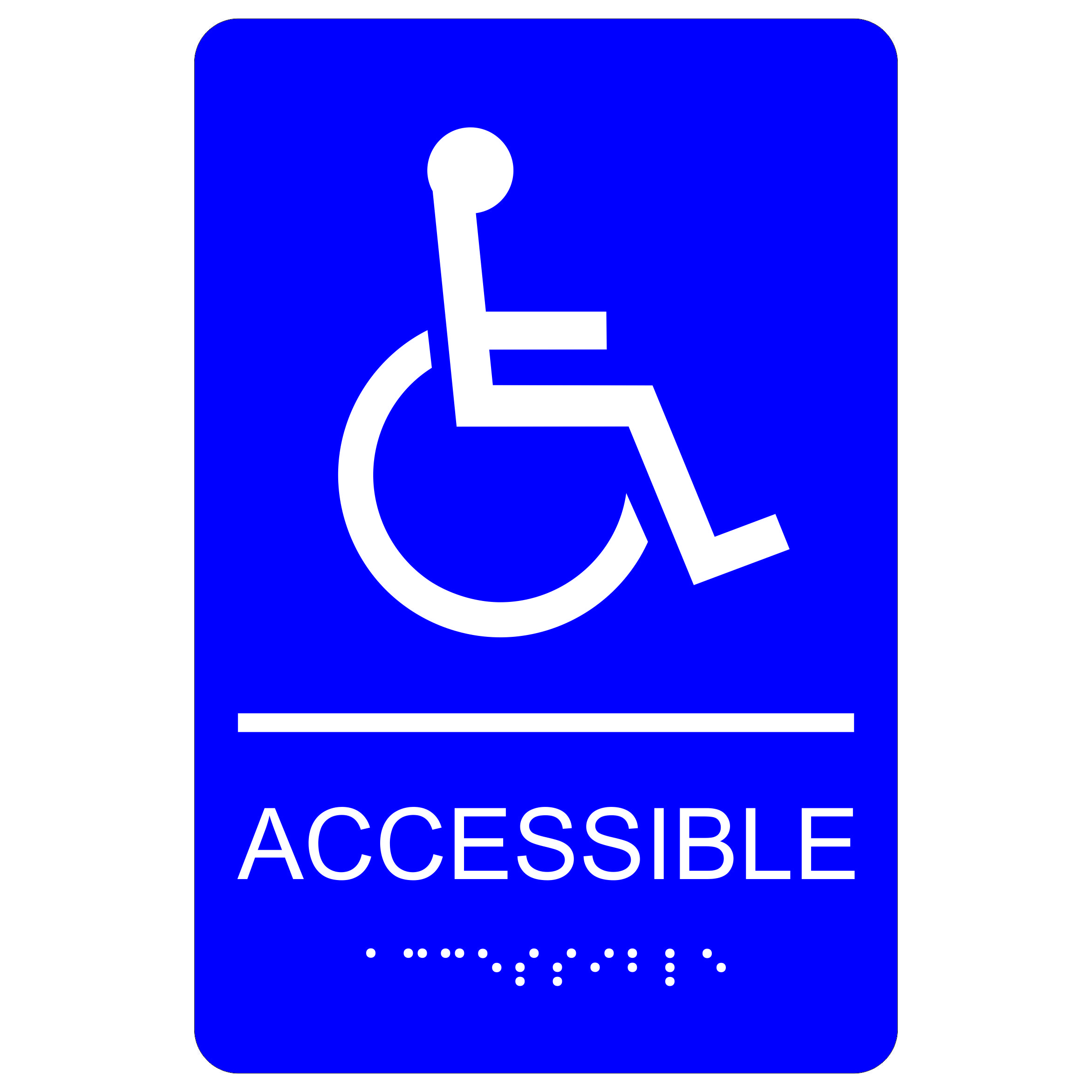Discovering the Secret Attributes of ADA Indications for Enhanced Accessibility
In the realm of accessibility, ADA signs act as silent yet powerful allies, making certain that spaces are inclusive and accessible for people with specials needs. By incorporating Braille and responsive elements, these indications damage barriers for the aesthetically impaired, while high-contrast shade systems and readable typefaces cater to varied aesthetic demands. In addition, their tactical placement is not arbitrary but rather a calculated initiative to assist in smooth navigation. Past these functions lies a much deeper story regarding the advancement of inclusivity and the continuous dedication to developing equitable rooms. What more could these indications symbolize in our quest of universal availability?
Value of ADA Compliance
Ensuring conformity with the Americans with Disabilities Act (ADA) is vital for fostering inclusivity and equivalent accessibility in public spaces and work environments. The ADA, established in 1990, mandates that all public centers, employers, and transport solutions accommodate individuals with impairments, guaranteeing they delight in the exact same legal rights and chances as others. Conformity with ADA requirements not just satisfies lawful responsibilities but likewise improves a company's reputation by showing its commitment to diversity and inclusivity.
One of the key facets of ADA compliance is the execution of accessible signs. ADA indications are developed to make sure that individuals with impairments can easily browse via buildings and areas.
In addition, sticking to ADA laws can reduce the danger of lawful consequences and potential penalties. Organizations that stop working to conform with ADA guidelines might deal with charges or legal actions, which can be both monetarily difficult and damaging to their public photo. Therefore, ADA conformity is essential to cultivating an equitable environment for every person.
Braille and Tactile Elements
The unification of Braille and tactile components right into ADA signage symbolizes the concepts of accessibility and inclusivity. These attributes are important for people who are visually impaired or blind, allowing them to browse public spaces with greater self-reliance and self-confidence. Braille, a tactile writing system, is crucial in providing written details in a layout that can be easily viewed via touch. It is usually placed below the equivalent message on signage to make sure that individuals can access the information without visual help.
Tactile aspects prolong beyond Braille and include elevated characters and symbols. These parts are made to be noticeable by touch, permitting people to determine space numbers, washrooms, departures, and various other essential locations. The ADA sets particular guidelines relating to the size, spacing, and placement of these responsive aspects to enhance readability and guarantee consistency across different settings.

High-Contrast Color Design
High-contrast shade plans play a crucial function in enhancing the presence and readability of ADA signage for people with aesthetic impairments. These systems are vital as they optimize the difference in light reflectance in between message and background, making sure that signs are conveniently discernible, even from a range. The Americans with Disabilities Act (ADA) mandates making use of specific color contrasts to suit those with restricted vision, making it a crucial element of conformity.
The effectiveness of high-contrast shades lies in their ability to stand out in different lighting conditions, consisting of dimly lit atmospheres and locations with glare. Commonly, dark message on a light history or light message on a dark background is utilized to attain optimal contrast. Black text on a yellow or white history gives a plain aesthetic distinction that aids in quick acknowledgment and understanding.

Legible Fonts and Text Dimension
When taking into consideration the design of ADA signage, the choice of readable typefaces and appropriate text size can not be overstated. These aspects are critical for ensuring that signs are available to individuals with visual disabilities. The Americans with Disabilities Act (ADA) mandates that typefaces must be sans-serif and not italic, oblique, script, highly decorative, or of uncommon kind. These demands assist make sure that the text is quickly understandable from a range which the personalities are distinct to varied audiences.
The dimension of the text also plays an essential function in availability. According to ADA guidelines, the minimum message height should be 5/8 inch, and it should increase proportionally with watching range. This is especially important in public rooms where signage demands to be checked out rapidly and properly. Uniformity in text size adds to a natural aesthetic experience, aiding people in navigating environments efficiently.
Furthermore, spacing in between letters and lines is indispensable to clarity. Adequate spacing prevents personalities from appearing crowded, boosting readability. By sticking to these requirements, developers can considerably boost availability, discover here ensuring that signage offers its intended function for all individuals, official site regardless of their visual capabilities.
Reliable Positioning Approaches
Strategic placement of ADA signs is vital for making the most of ease of access and making certain conformity with lawful requirements. ADA guidelines stipulate that signs must be installed at an elevation between 48 to 60 inches from the ground to guarantee they are within the line of view for both standing and seated individuals.
Furthermore, indications need to be positioned beside the latch side of doors to allow very easy recognition before entry. This placement helps people situate rooms and areas without obstruction. In instances where there is no door, signs ought to be situated on the nearest nearby wall. Consistency in indication placement throughout a center boosts predictability, decreasing complication and boosting general user experience.

Conclusion
ADA indicators play an important function in promoting ease of access by incorporating functions that address the needs of individuals with disabilities. Integrating Braille and tactile elements makes sure crucial details comes to the visually damaged, while high-contrast color design and legible sans-serif font styles improve exposure across different lights conditions. Efficient positioning approaches, such as appropriate placing elevations and critical locations, pop over here further facilitate navigation. These aspects jointly foster an inclusive setting, underscoring the importance of ADA conformity in ensuring equivalent accessibility for all.
In the world of availability, ADA indicators offer as quiet yet powerful allies, guaranteeing that rooms are accessible and inclusive for people with handicaps. The ADA, enacted in 1990, mandates that all public centers, employers, and transportation solutions suit individuals with specials needs, guaranteeing they take pleasure in the very same civil liberties and possibilities as others. ADA Signs. ADA signs are created to make certain that individuals with specials needs can conveniently browse through areas and buildings. ADA guidelines stipulate that signs must be mounted at an elevation between 48 to 60 inches from the ground to ensure they are within the line of view for both standing and seated individuals.ADA indicators play an important role in advertising ease of access by incorporating attributes that resolve the demands of individuals with disabilities